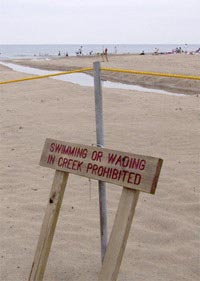National Epidemiological and Environmental Assessment of Recreational Water
Mission & Objectives The National Epidemiological and Environmental Assessment of Recreational (NEEAR) Water Study is a collaborative research study between two laboratories of the U.S. Environmental Protection Agency and the Centers for Disease Control and Prevention that are investigating human health effects and rapid water quality methods associated with recreational water use. This study will provide real-time water quality measurements and help us better understand the link between water pollution, swimming at the beach, and peoples' health. A main goal of the NEEAR study is to determine how new ways of measuring water pollution can be usedeffectively to protect swimmers' health. Water Quality Assessment As part of this study, water quality is being assessed by EPA researchers
using new rapid, real-time (≤ 2 hours) methods, the new EPA monitoring protocol (See the EMPACT Study.), and the currently approved membrane filter method for enterococci (EPA Method 1600, mEI Agar). To obtain the most accurate measurements, the Agency will be
using state-of-the-art equipment and techniques to help assess the water quality of our
Nations recreational waters in real-time.
Study Objectives The objectives of the NEEAR Water Study are to:
Study Results The NEEAR study's first major publication was released in September 2005. View the abstract or full article: |
|||||
![[logo] US EPA](https://webarchive.library.unt.edu/eot2008/20090305081827im_/http://www.epa.gov/epafiles/images/logo_epaseal.gif)


